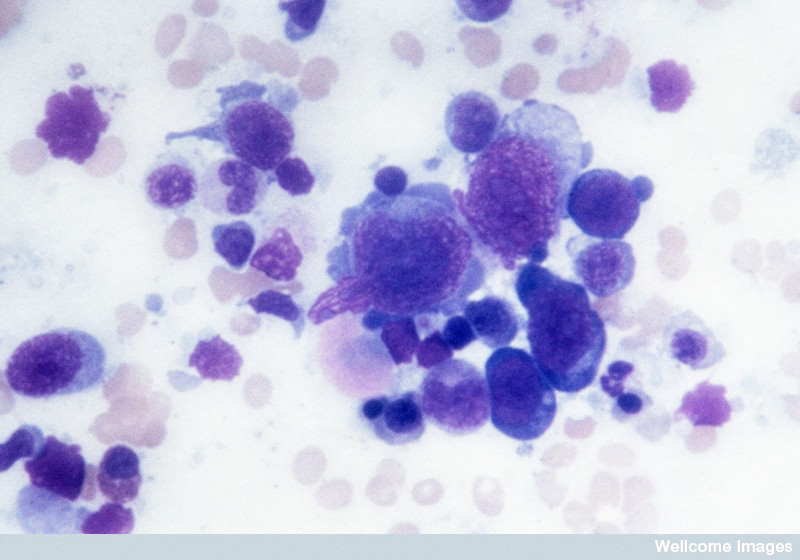Hodgkin lymphoma is a disease of the lymphatic system, where cells in the lymph nodes become cancerous, and is commonly treated with radiotherapy or chemotherapy. It has been known since the 1990s that treating Hodgkin lymphoma with radiotherapy is associated with an increased risk of breast cancer later in life. Professor Tony Swerdlow and colleagues investigated this in the world’s largest cohort study into factors affecting the risk of breast cancer after treatment with radiotherapy for Hodgkin lymphoma. They analysed data from 5,000 women who had been treated with supradiaphragmatic radiotherapy (radiotherapy performed above the diaphragm) between 1956 and 2003 to determine breast cancer risk in relation to their treatment.
The team looked at factors such as the age of the patient when they were treated, the type of treatments they received, and how long ago this was. Combining this information with breast cancer occurrence, the team could calculate relative breast cancer risk for each of a number of different scenarios by comparing breast cancer incidence in the different groups against the general population rate of breast cancer. Because of the large number of women included in the study, the risk calculations had greater precision than those previously.
Most excitingly, the team were able to use these results to describe cumulative risks for different types of patient, bringing together the different scenarios of an individual’s treatment. This can be used to calculate an individualised estimate of risk for patients, providing information for personalising follow-up and preventive measures according to treatment type, age, and time.
The findings suggest some aspects of treatment and follow-up that need to be considered to potentially decrease the chances of a patient with Hodgkin lymphoma developing breast cancer later in life or to detect the disease early. For example, the analysis suggests that more intensive breast cancer screening programmes could be used for certain women at particularly high risk of breast cancer.
The study found that patients who were treated with radiotherapy around the age of puberty were at greater risk of breast cancer than those who were treated later in life and points to the need to consider whether special measures should be undertaken to reduce the risk for girls undergoing radiotherapy at these ages.
This large cohort study has helped identify risk factors for breast cancer for patients with Hodgkin lymphoma, and gives a useful underpinning for personalising treatments and patient follow-up and therefore, it is hoped, leading to improved outcomes for patients.
Cooke, R., Jones, ME., Cunningham, D., Falk, SJ., Gilson, D., Hancock, BW., Harris, SJ., Horwich, A., Hoskin, PJ., Illidge, T., et al. (2013) Breast cancer risk following Hodgkin lymphoma radiotherapy in relation to menstrual and reproductive factors. Br J Cancer, Vol.108(11), pp.2399-2406 doi:10.1038/bjc.2013.219
Image © Wellcome Images, Creative Commons by-nc-nd 2.0 UK
